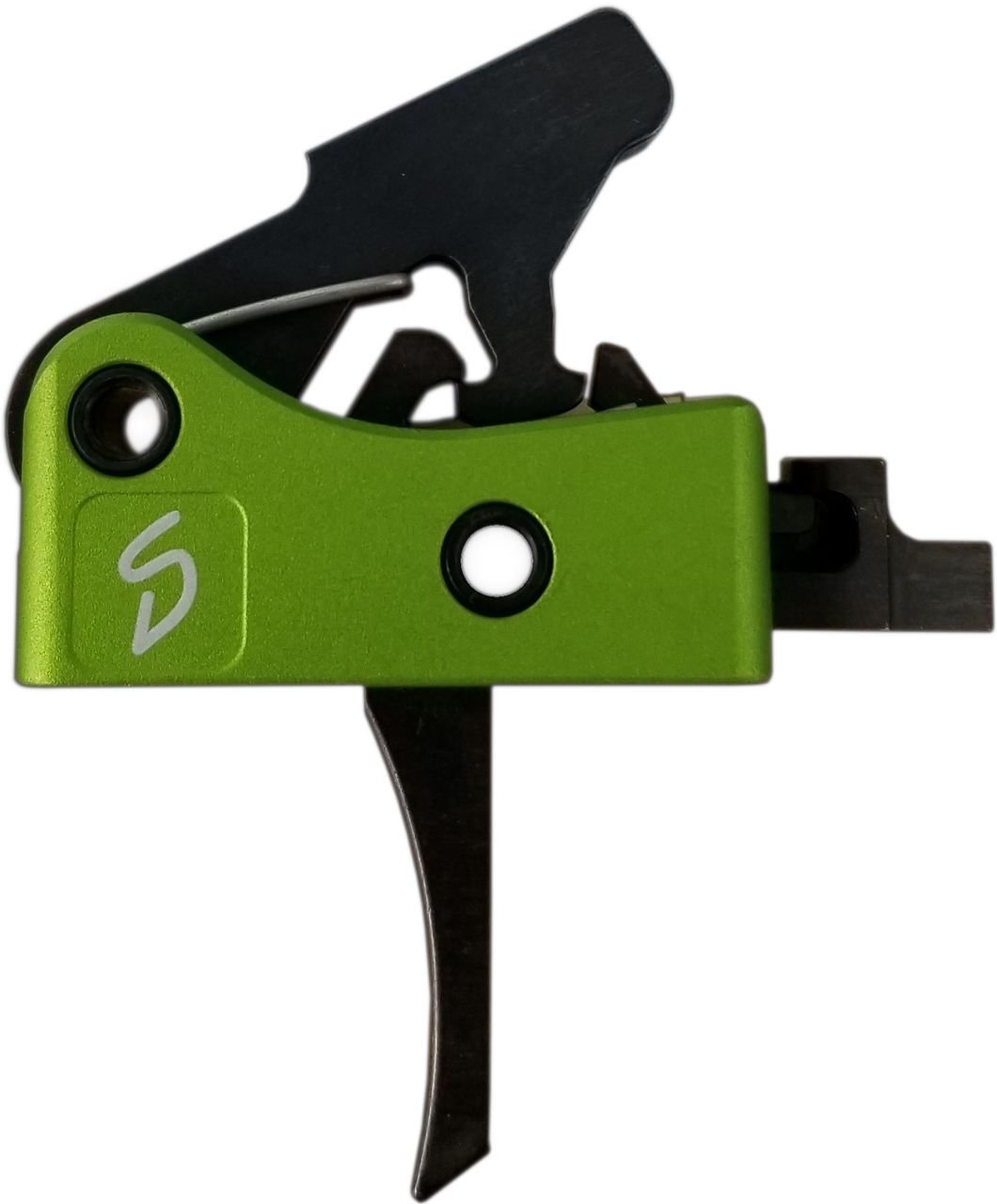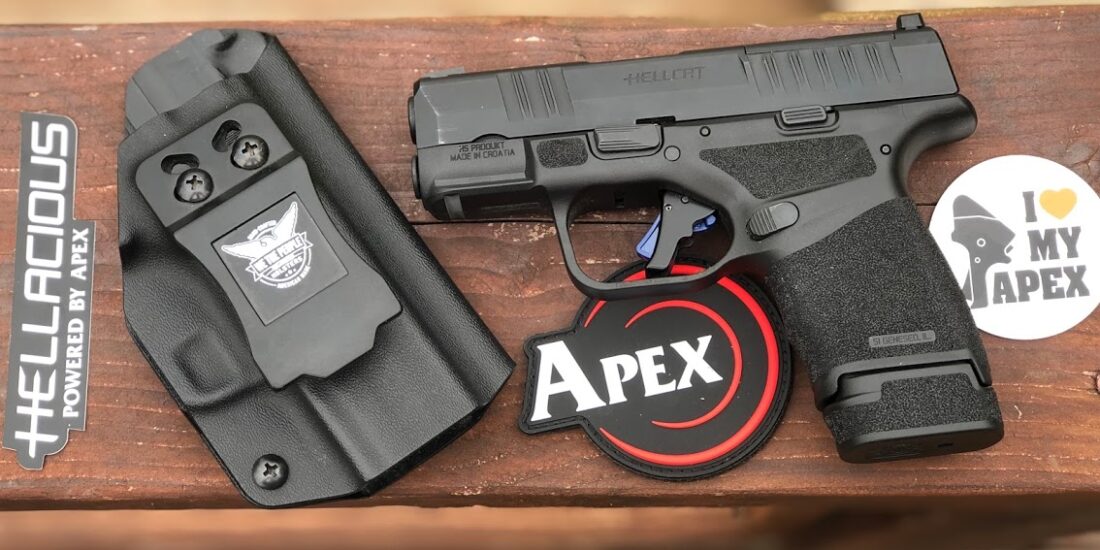Functionality or Felony: A Tale of Primers, Disconnectors and Triggers

This installment will deal with 1 persons experience of running a range as a certified Instructor with 20 years experience, and being exposed to over 4 million rounds at that range, not counting training around the country in various capacities with various agencies and other entities. This is not You-Tube magic, or internet nonsense- merely facts. I’m a huge believer in facts, and documentation.
Spoiler alert: If things like this are happening to you, and you don’t have the knowledge/skills/abilities to remedy the situation, seek professional guidance. Buying a factory assembled modular trigger like the Stern Defense H2S can be the difference between functionality and felony.
Twenty years ago I earned my official certification as a Law Enforcement Instructor, via the NRA. The acronym was “LEFIDS”- Law Enforcement Firearms Instructor Development School. It was a 2 week segment of life revolving around semi-automatic pistols, and shotguns, which were stil more prevalent than carbines, at the time.
This background check leads to the first fact- my NRA Instructor was a salty guy who’d “been there-done that” in many capacities. He was also the only man who worked alone in all of my experiences with NRA training (who knows, maybe his partner was sick). He did a very good job of getting points across with minimal talking.
One thing you must understand is that when you’re scooting and shooting for 2 weeks is that a lot of time is spent on motion and safe manipulation of firearms. We were all given 2 dummy rounds for the appropriate caliber pistol, and we used these for the duration of training, while we also ejected live rounds to the ground hundreds of times. The fact is coming, I promise.
He worked at a paved range in Arizona, (which one precisely escapes my mind, it was a long time ago) and the whole ejecting live rounds thing happened there as well. There were at least 100 firing points on this range, and in 4 million rounds, there were 4 instances where live rounds had hit pavement just right, and detonated. So, a person could argue that the odds of a pistol round hitting pavement hard enough to cause the primer to detonate the round were literally a million to one. I can say that I’ve not ever seen this- but it can happen. So, while rare, weird things can and will occur, if you put in enough time on the line.
A few years back at another place I’m familiar with, there was an ammo can by a clearing barrel. At the end of whatever activity that had occurred, the trainee would approach the clearing barrel, drop their mag, pull the slide to the rear, ejecting the chambered live practice round, and proceed to verify the firearm was indeed clear prior to cleaning. Cleaning the firearms took place in a different area, where live ammunition is forbidden. Think about that for a minute, all of you chrome plated studs out there. Keep live ammo away from guns during cleaning. I’ve not seen tutorials about this in videos, because it’s not sexy enough, no doubt. Wearing your Team Wendy helmet and cleaning your firearms just makes you dorky, at a minimum.
There’s another lesson here too, kiddos, and it is this- do not EVER pull some parlor trick crap of keeping your paw over the ejection port to trap/keep a bullet coming out of the chamber. Right now, a round of practice 9mm costs about 31 cents.
Let’s say that you’re that guy who does this type of foolishness, and in your efforts to keep a bullet from hitting the ground results in you pushing that round against the frame of the firearm. In particular, the PRIMER is pushed against the frame, and the round detonates. There goes your bowling career. This has indeed happened, more than once. Are your hands worth more than 31 cents, even though at that moment you were a total idiot?
Back to the ammo can and clearing barrel. Rule 1- let the flaming magazine hit the ground, or floor. They are disposable. Rule 2- the same goes for the ejected round. When all of these people were cleared out to clean, an Instructor gathered up the loose rounds, tossed them into said ammo can, primer met ammo can in some inexplicable way, and….BANG! Granted, it’s not the end of the world, the round was not in a barrel, so the explosion didn’t have a whole lot of mustard on it, but it kicked the Pucker Factor up to 11. Weird, rare, but it happened. Again, I did not witness this first hand , but the parties involved had absolutely nothing to gain, and a LOT to lose because of this. Needless to say, the practice was stopped immediately at that juncture in time.
Following are two incidents that happened to yours truly, and both involved 223 firearms. The brand means absolutely nothing, nor does the ammo type. Following are some mechanical facts that you won’t see or hear about from your prancing You Tube Super Dudes in their $200 pants, because they typically don’t possess the knowledge to present it, and/or, they’ve not spent enough time on the line to have witnessed it.
Example 1- let’s talk about Disconnectors first. We are discussing AR platform firearms here, and nothing else. If you ever go to Armorer School, (and there are several put on by various vendors,) you will learn this. It only takes a thousandth of an inch wear on a disconnector to cause it to “double” occasionally during live fire. If that were to happen to you, you need to dispose of that part, and install a new one, immediately. The same applies to the Disconnector Spring. If 1 wears out , replace both. Imagine if you will for a moment that you have a new shooter, and you’re trying to get them up to speed on this platform. Further imagine, if you will, that this scenario occurs, and they have a “runaway”. Let’s go a step further, and say that they panic. Someone could die. In a perfect world, this would not ever happen, but it does.
We have dedicated range guns, and as such, they require daily scrutiny. I had a range gun that was acting up, and I’d pretty much overhauled it, stem to stern. I’m performing a test fire, and have sent 12 rounds down range on the steel, no issue when IT happened. The firearm went full auto. The firearm is a semi only, not select fire- this is not good. Immediate action- smash the mag toward the body, mis-aligning things/stopping further feeding (hopefully). This worked. I dropped the mag, checked it, 2 bullets remaining. That means 16 just went down line, and did all 16 remain within the confines of the berm? Do you honestly believe that you can recreate 16 individual impacts on dirt vividly in your mind, while trying to ascertain just why in the hell this thing went spastic? If you can, please provide your personal details, because YOU should be a teacher, somewhere. Here’s another pointer- most problems with firearms can be remedied effectively by removing the food source.
Long story short, after an autopsy on the gun, here is what I found. I tried to take pictures for this article to no avail, but, if you go to Google Images, look at AR 15 triggers- they are slotted, and there’s a rounded area that allows your Disconnector Spring to be inserted. Your Disconnector rides against this spring, where it does its job in assisting your Disconnector. Did you know that a 223 primer will also fit in there like it was custom machined for it? Well, it does. In some way unbeknownst to me, a primer had separated from the cartridge casing, pushed the spring out in the firing sequence, and assumed the position of the spring. Being rigid, it wouldn’t allow the disconnector to work correctly, and emptied the magazine (almost) quite handily.
Did you know that this happens enough that it’s in the manual in the troubleshooting area? Well, it is. This was the only time in over 20 years that it’s happened to me with this platform, but that was enough. Let’s go back to the nervous shooter/runaway scenario momentarily. Can you see that potentially bad things can happen? the culprit, again, was the lowly primer.
The final event for this segment is ammo by a completely different maker. This was not practice ammo, either- it was the “good stuff”. We had been experiencing primer separations, again. At this point, some of you “experts” out there are saying to yourself, and your cat, who lives with you in the basement- that all of this primers leaving cartridges stuff is indicative of using 5.56 in a .223 bore, and you would be right. However, don’t think for a millisecond that I’m incapable of telling the difference. This is a pet peeve, personally, and it’s disturbing how many of you out there are doing just that. Here’s a bit of disturbing trivia for you, nearly EVERY barrel by EVERY maker out there is stamped “5.56”, and a LOT of them are NOT 5.56. Another common selling point is just how many makers will all state that their barrel stock is the same as “Browning/FN machine gun quality”. Right. I also have a money tree in my back yard, and just go to work for the quirky dialogue. Buyer Beware, folks. Do your homework, learn the trade. When you buy your ammo in say, quarter million round batches, you will find weirdness, and pretty much, the maker is irrelevant. I’m not throwing any vendor under the bus, so, Google inverted primers, and other ammunition abnormalities, and look at the pictures provided. Spend enough time on a firing line, and you will see these things.
Long story short, during a class, we had 2 instances of primers going into the gas keys, and I will tell you here that it stops a firearm cold. You will have a glorified single shot, for sure. The good news is that it was merely training, and no one could have died from this. The bad news is that this was duty stuff, which is considerably more expensive. Needless to say, we will not be using this vendor anymore.Again, these were the only 2 instances I’ve seen in real life, but that was enough.
So, what did we learn?
1-The more you’re around firearms, the more likely you are to see unusual things happen.
2-Unusual things will indeed happen when you train often, and if your safety checks are squared away, this isn’t necessarily a bad thing.
3-You should learn SOMETHING every time you train. Sometimes, the lesson learned is what “not to do”, but it’s still learning.
4-Most firearms issues first involve taking the “food source” i.e. magazine/chambered round out of the firearm
5-You don’t need a striker or firing pin to detonate some rounds…some times. An ammo can or firearm frame (or any hard object) can cause detonation.
6-Trying stupid things like trapping a round in your hand could disfigure/cripple you for life
7-Loose primers can bang around in the internals of the firearm and cause serious problems. This is why we have pistols.
8-Losing primers from rifle rounds can indeed be a clue that you’re using 5.56 in a barrel chambered for .223
9-Pretty much every barrel out there is stamped 5.56, though this might not be true.
Featured image courtesy of Stern Defense.




